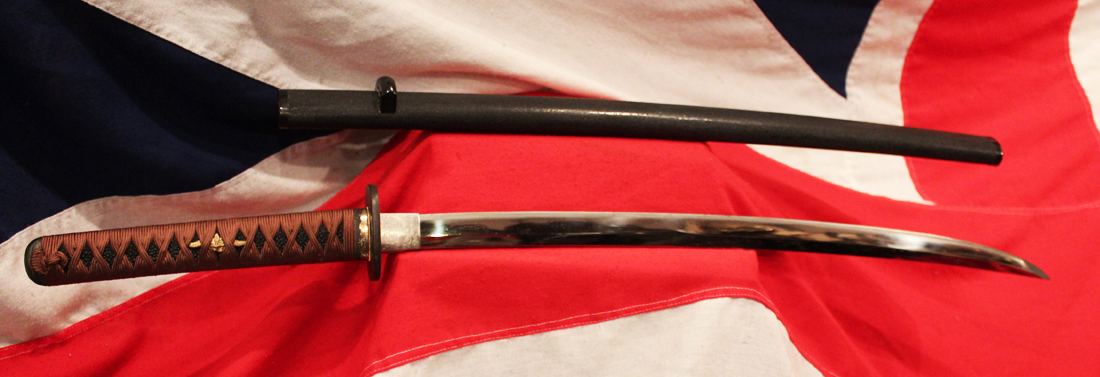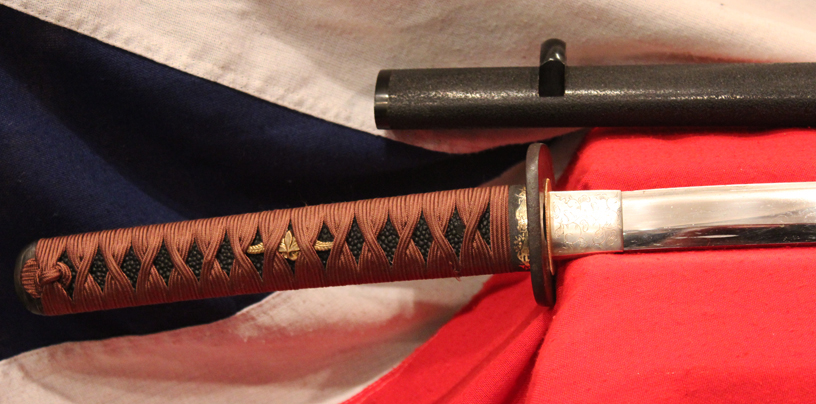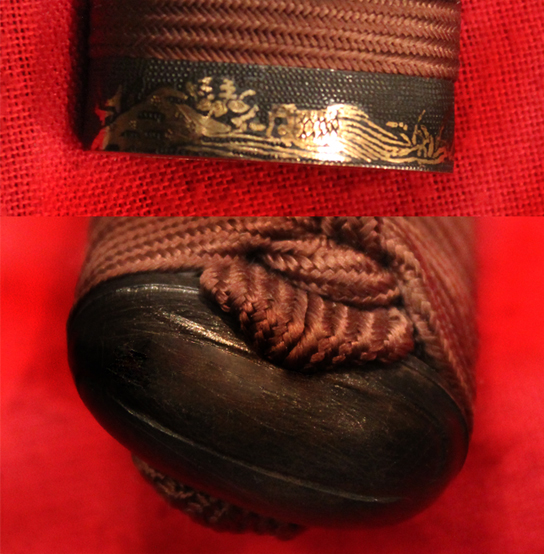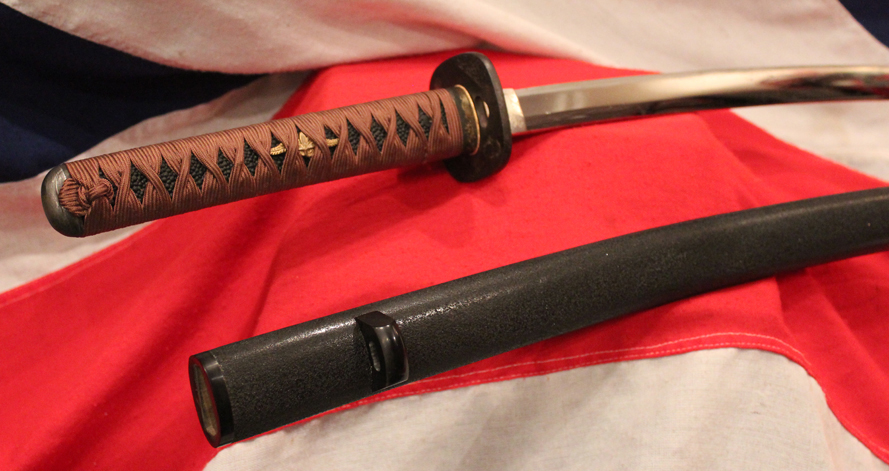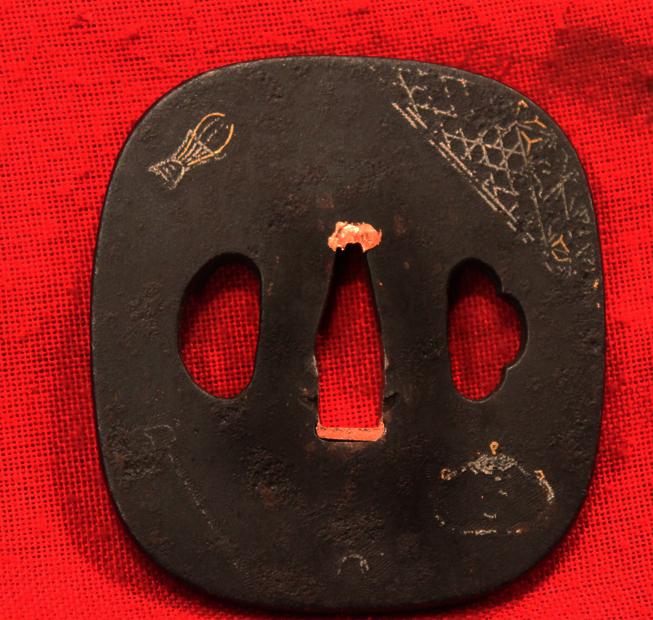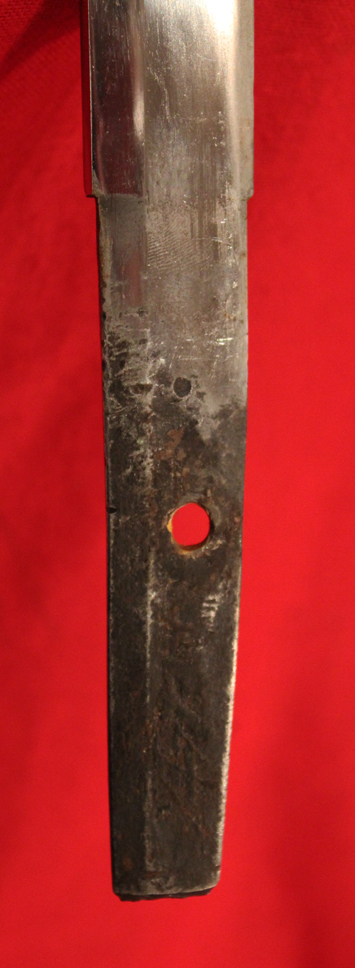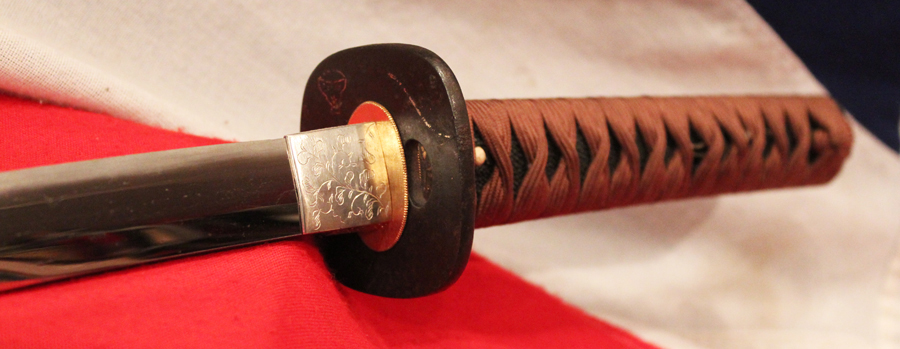*** Amazing Below Half Price Special Thank You Offer. A Super 700 Year Old Koto Era Samurai Sword Nagamaki Naoshi.
With a desperate need to make space, after the arrival of 23 samurai swords just before Christmas, we are giving its next owner a spectacular and superb below cost back catalogue gift. From the Kamakura period. The hilt is wrapped in brown silk over black giant rayskin. The fuchi is iron inlaid with pure gold. Black ishime lacquer saya. The tsuba is iron with traces of silver and gold inlays in the form of samurai armour pieces. The habaki is silver plated and scroll engraved. The blade is most ancient and surface thinning in parts. The 'cormorant's neck' blade form is patterned after the shape of the Nagamaki, the powerful long-handled sword popular between the 12th and 14th centuries. The Unokubi-Zukuri Katana provides excellent balance in a strong cutting blade. The mune (back) of the blade is also different from the more usual form in that it starts out like most katanas, but after a sixth of the way down, the mune thins out rapidly into a long thin false edge. The last half inche of the mune then flares back out into a diamond form. The Koto period is 900 to 1595 AD. With very nice mounts. Overall in saya 34.5 inches long, blade tsuba to tip 23.5 inches long, sword length out of saya including tsuka 33 inches. This samurai sword, like all true and original samurai swords, would have been the prize possession of every samurai that owned it. It would most likely have cost more than his home, and would certainly have been more important.
This is just one reason why fine Japanese sword steel, even of this tremendous age, is in such good state of preservation. When a katana such as this has been, for its entire existence, so highly revered, treasured and appreciated, it will have been cared for most sensitively and treated with the utmost respect during its entire life. In many regards it will have represented the only thing that stood between its samurai owner, of which there may have been 30 or more during this swords great history, and his ultimate downfall in a combat situation. In many respects it is, in our opinion, our greatest privilege to own, even briefly, such incredible pieces of samurai art as this one, to hold in one’s hands an item that has been used by so many noble warriors, for so many hundreds of years, and to look as good as the day it was made, up to 700 years ago is actually remarkable. For example, we have many dozens of steel swords, late medieval, for example, up to and between 500 to 700 years old, and certainly some up to 2000 years old, but, those swords are not from Japan, but from Europe, and every one of those will have all the usual signs of great ageing and wear, likely being very russeted, and certainly no surviving additional mounts to speak of, and this is totally the norm, and absolutely as to be expected and thus accepted. In every great collection around the world, all such steel swords from early European history, that have survived as long as these Japanese swords, look worn, aged, and somewhat tired, compared to how they once beautifully looked when first made and carried into combat. However, this not at all so with almost all surviving ancient Japanese swords, and that some, can and do, look as almost good as new, even if some of their blades are surface grey and lack bright polish, so, by comparison, effectively, there is no comparison between the great ancient samurai swords and every other countries similarly aged surviving swords.
As a very special below cost offer, this is a one off, immediate sale only piece, no layaway or p/x apply..
Code: 23121
Price
on
Request



